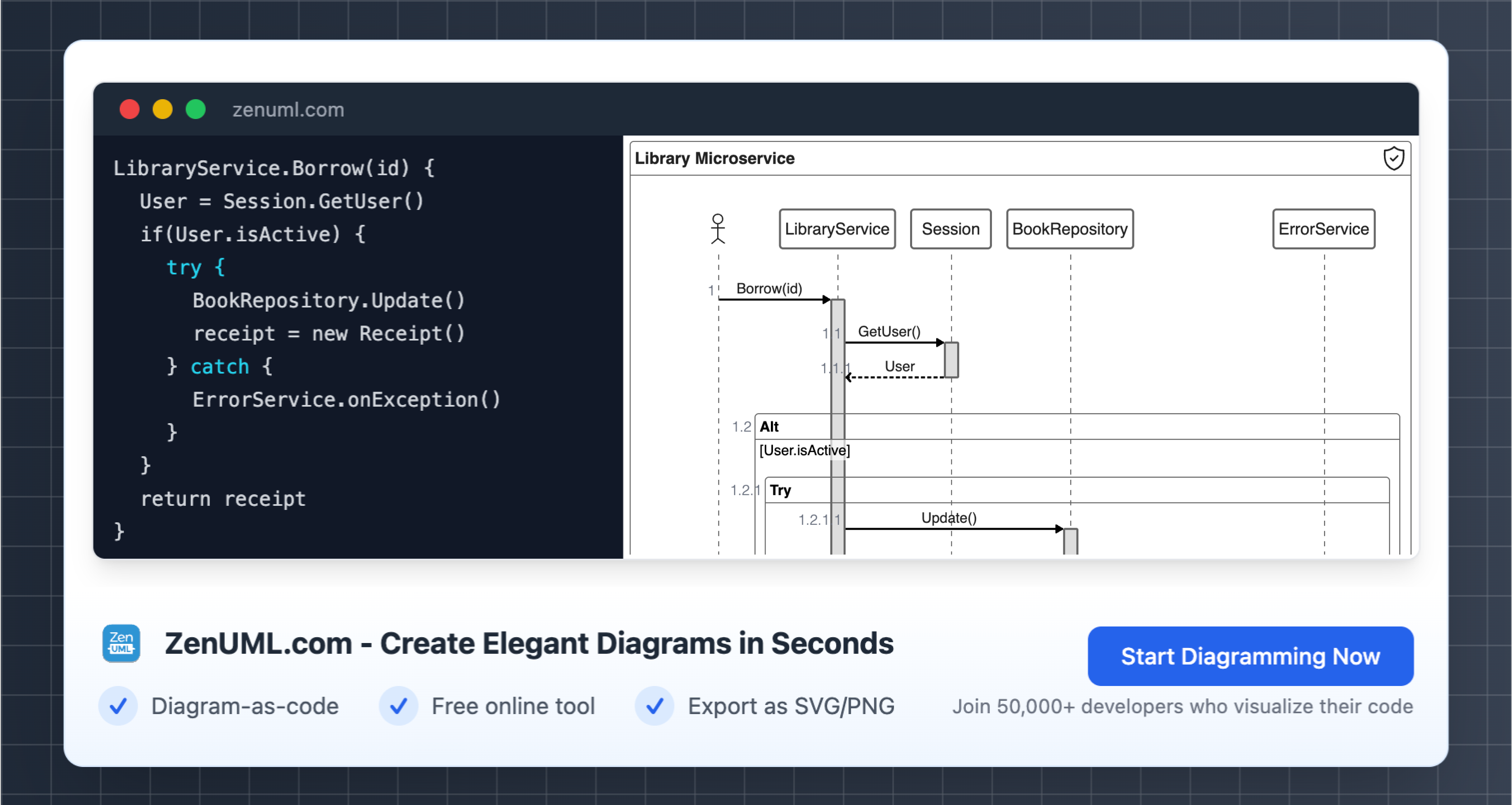Try ZenUML now!
Introduction to Sequence Diagrams
Business processes lie at the heart of any organization. They define how work gets done, from the initial customer inquiry all the way through fulfillment, support, and beyond. With so many moving parts, it's easy for processes to become convoluted messes if left undocumented. This is where sequence diagrams shine as a modeling technique.
A sequence diagram uses simple graphic notation to depict interactions between different entities over time. At a high level, it shows the sequence of messages or events that pass between various objects in order to carry out a specific task or business process. This makes sequence diagrams extremely effective for visualizing business processes in a clear, unambiguous way.
Breaking Down a Process with a Sequence Diagram
To demonstrate, let's walk through an example customer order fulfillment process. We'll break it down step-by-step using a sequence diagram to untangle the interactions:
The process begins with a customer placing an order on our e-commerce site. This triggers a "Place Order" message to the Order Management system. Order Management is then responsible for validating the order details, such as checking for promotions or verifying payment.
Once validated, it sends an "Initiate Fulfillment" message to the Warehouse system to retrieve the ordered items from inventory. Warehouse picks, packs, and stages the order for shipment. It responds back to Order Management with a "Fulfillment Complete" message.
Order Management then triggers Shipping by sending a "Ship Order" message. Shipping prints the necessary labels and documentation before handing the order off to our Logistics partner for delivery. Once the order is marked as shipped, Order Management archives the transaction.
And there you have it - the key interactions that comprise our order fulfillment process, laid out step-by-step using a simple sequence diagram. Visualizing it this way makes the process flows incredibly clear and easy to understand at a glance.
The Advantages of Sequence Diagrams in Business Modeling
Some key advantages of using sequence diagrams for business process modeling include:
- Clarity - Sequence diagrams remove ambiguity by clearly showing the order that messages are sent and received between different entities. This makes complex processes much easier to comprehend.
- Communication - The visual format improves communication across teams. Sequence diagrams provide a shared language for discussing processes without getting bogged down in technical details.
- Collaboration - Their simplicity also makes sequence diagrams accessible to both technical and non-technical stakeholders. This facilitates collaboration between business and IT during process design.
- Troubleshooting - If a process breaks down, sequence diagrams make it straightforward to methodically trace the interactions and pinpoint where the failure occurred.
- Optimization - Bottlenecks and inefficiencies stand out visually, making it easy to identify areas for improvement. Process flows can then be reworked as needed.
- Documentation - Sequence diagrams generate process documentation automatically as a byproduct of modeling. This provides an executable specification for developers as well as a training tool.
Conclusion: The Power of Sequence Diagrams
While other diagramming techniques have their place, sequence diagrams excel at concisely yet comprehensively depicting business process interactions. Their clarity, communication benefits, and troubleshooting advantages make them a powerful modeling tool that should be in every business analyst's toolkit. So don't overlook sequence diagrams when mapping out your organization's key process flows.
Find our more on The Ultimate Guide to Business Process Modeling
Zenuml detailed feature roadmap available here.

